Description
The instruction for medical use
of AZARGA medicine
the Trade name
of Azarga
the International unlicensed name
Is not present
the Dosage form
of the Drop eye, suspension, 5 ml
Structure
of 1 ml contain
active agents: brinzolamid 10 mg, Timololum a maleate of 6.8 mg (it is equivalent to Timololum of 5.0 mg),
excipients: a benzalkoniya chloride of 50% solution, dinatrium edetat, sodium chloride, tiloksapol, Mannitolum, carbomer (974P), acid chlorohydrogen and/or sodium hydroxide (for correction rn), the water purified sterile up to 1.00 ml.
Description
Uniform suspension of white or almost white color.
Pharmacotherapeutic group
Drugs for treatment of diseases of eyes. Protivoglaukomny drugs and miotik. Beta blockers. Timololum in a combination with other drugs.
The ATX S01ED51 code
the Pharmacological
Pharmacokinetics At properties topical administration brinzolamid and Timololum are soaked up in a cornea and get into a system blood stream. After use of eye drops of Azarga, average Cmax of Timololum was reached through 0.79 & plusmn, 0.45 hours. The linking of a brinzolamid with proteins of plasma moderated (about 60%). Brinzolamid collects in erythrocytes thanks to high degree of affinity to CA-II and smaller degree to CA-I. Its active metabolite of N-dezetil also collects in erythrocytes, but due to communication mainly with CA-I. Thanks to affinity to erythrocytes and CA fabrics, concentration of a brinzolamid and metabolite in plasma is low. At an equilibrium state Timololum is found in blood plasma of the person within 12 hours after use of eye drops of Azarga.
Metabolism of a brinzolamid happens by N-dealkylation, O-dealkylation and oxidation of a N-propyl side chain. The main metabolite of N-dezetilbrinzolamid which is formed at the person in the presence of a brinzolamid also contacts CA-I and also collects in erythrocytes. Metabolism of Timololum is carried out mainly by CYP2D6 isoenzyme.
Brinzolamid is brought, generally through kidneys (about 60%). About 20% of a dose are removed with urine in the form of metabolites. Timololum and its metabolites are generally removed by kidneys. About 20% of Timololum are removed with urine in not changed look, and the rest in the form of metabolites. Elimination half-life of Timololum makes 4.8 hours after use of eye drops of Azarga of plasma.
The pharmacodynamics
Eye drops of Azarga, suspension contains two active components: brinzolamid and Timololum maleate. These two components lower the increased intraocular pressure by decrease in secretion of intraocular liquid, but work with two different mechanisms of influence. The combined effect of these two active ingredients leads to additional decrease in intraocular pressure in comparison with each of substances separately.
Brinzolamid is powerful inhibitor of a karboangidraza of II (CA-II), main isoenzyme of an eye. The karboangidraza inhibition in tsiliarny shoots of an eye reduces the level of secretion of intraocular liquid, presumably slowing down formation of ions of bicarbonate with the subsequent decrease in level of transport of sodium and liquid.
Timololum a non-selective blocker of beta adrenoceptors without sympathomimetic activity, has no direct depressive impact on a myocardium, has no membrane stabilizing activity. Tonografichesky and flyuorofotometrichesky researches showed that its main action consists in reduction of formation of intraocular liquid and small increase in its outflow.
Indications
the Increased intraocular pressure at patients with an open-angle form of glaucoma or intraocular hypertensia at adult patients at whom monotherapy was insufficient for decrease in VGD.
A route of administration and doses
to Stir up a bottle before the use!
Eye drops of Azarga dig in in a konyyuktivalny bag on 1 drop of 2 times a day in the affected eye (eyes), at the same time.
After burying the pressing of the lacrimonasal channel or cover a century for 2 minutes is recommended. It reduces system absorption of medicine and serves as prevention of development of adverse system reactions.
If the dose was passed, then treatment has to be continued with the following dose according to the schedule. The dose should not exceed 2 drops a day in the affected eye (eyes).
It is not necessary to touch with a pipette tip eyes or any other surface to avoid pollution of contents of a bottle.
When replacing other drug against glaucoma with eye drops of Azarga, it is necessary to stop intake of the replaced drug and to begin administration of drug of Azarga next day.
When using several ophthalmologic drugs of topical administration, it is necessary to observe an interval between burying at least 5 minutes.
Duration of treatment is defined by the attending physician.
Side effects
Local:
– irritation of eyes: burning sensation, pricking, an itching, dacryagogue, reddening, painful feelings of an eye, an eye hypesthesia, feeling of a foreign body in an eye
– a keratitis, a keratopathy, increase in the relation the excavation/optic disk, defect of a corneal epithelium, injury of a corneal epithelium, increase in intraocular pressure, amotio of a choroid of an eye, coloring of a cornea, swelled corneas
– allergic conjunctivitis, a chemosis, conjunctivitis, a keratoconjunctivitis, a subconjunctival cyst, pterygium
– inflammation of meibomian glands
– opalescence, pigmentation of a sclera
– visual discomfort: decrease in visual acuity, misting of sight, a diplopia, a photopsia
– irritation a century: reddening, dermatitis, the century
– shedding of eyebrow or eyelashes
System swelled:
At absorption of ingredients of drug in rare instances can be noted:
– the unusual smack in a mouth (acid or bitter) after burying, obtusion of flavoring feelings, oral paresthesia
– pain in an upper part of a stomach, an esophagitis, dryness in a mouth, nausea, vomiting, dyspepsia, diarrhea, discomfort in a stomach, frequent defecation, gastrointestinal disorders, a meteorism
– a nasopharyngitis, pharyngitis, sinusitis, rhinitis
– a cardiorespiratory distress syndrome, bradycardia, arrhythmia, a cardiopalmus, a stethalgia, increase or lowering of arterial pressure, swelled, heart failure, atrioventricular block
– a headache, dizziness, cerebral ischemia, a stroke, a syncope, strengthening of signs and symptoms of a heavy myasthenia, paresthesia, sonitus
– drowsiness, motive dysfunction, amnesia, memory disturbance, paresthesia, a tremor, a hypesthesia, loss of taste, fatigue
– apathy, a depression, suppressed mood, decrease a libido, nightmares, hyperexcitability, insomnia, sexual dysfunction
– a spasm of bronchial tubes, an asthma, cough, irritation in a throat, congestion of a nose, congestion of upper airways, post-nasal flowed, sneezing, dryness in a nose, nasal bleeding
– extremity pains, a back pain, muscular spasms, myalgia, an arthralgia
– kidney pain, a pollakiuria
– hypersensitivity, system allergic reactions, the urticaria, a Quincke’s edema, anaphylactic reactions localized and generalized rash, an itching, feeling of tightness of skin, dermatitis, an alopecia, psoriazopodobny rash or exacerbation of psoriasis
– increase in level of a lactate dehydrogenase in blood, increase in level of potassium in blood, decrease in quantity of erythrocytes, increase in level of chlorides in blood, abnormal results of functional tests of a liver, a hypoglycemia.
Contraindications
– hypersensitivity to active or to excipients
– hypersensitivity to other beta-blockers
– hypersensitivity to streptocides
– bronchial asthma
– the chronic obstructive disease of lungs of heavy degree
– sinus bradycardia
– a syndrome of weakness of a sinus node
– sinuatrial blockade
– atrioventricular block of II and III degree
– the profound heart failure
– cardiogenic shock
– allergic rhinitis of heavy degree
– a renal failure of heavy degree
– giperkhloremichesky acidosis
Medicinal interactions
of Special researches on interaction of the drug Azarga with other drugs was not carried out.
The Azarga contains brinzolamid, karboangidraza inhibitor, and, despite topical administration, is absorbed systemically. Cases of disturbance of acid-base equilibrium at oral administration of inhibitors of a karboangidraza are known. It is necessary to consider possible interaction when prescribing the drug Azarga.
Perhaps additive action on the known system effects of inhibition of a karboangidraza at the patients receiving at the same time inhibitors of a karboangidraza and brinzolamid in the form of eye drops. Simultaneous use of the eye drops containing brinzolamid and oral inhibitors of a karboangidraza is not recommended.
P450 cytochrome isoenzymes are responsible for metabolism of a brinzolamid: CYP3A4 (generally), CYP2A6, CYP2B6, CYP2C8 and CYP2C9. It is supposed that the drugs inhibiting CYP3A4 isoenzyme such as ketokonazol, itrakonazol, Clotrimazolum, ritonavir and troleandomitsin, inhibit metabolism of a brinzolamid. It is necessary to be careful at joint prescribing of inhibitors of an isoenzyme of CYP3A4. However accumulation of a brinzolamid is improbable as he is brought by kidneys. Brinzolamid is not inhibitor of isoenzymes of P450 cytochrome.
There is a probability of additive effect that can lead to hypotension and/or the profound bradycardia, at ophthalmologic use of a beta-blocker together with oral administration of blockers of calcium channels, beta-blockers, antiarrhytmic means (including Amiodaronum), cardiac glycosides, parasympathomimetics or a guanetidin.
Beta blockers can weaken the answer to the adrenaline which is applied to stopping of anaphylactic reactions. The extra care needs to be observed at patients with an atopy or anaphylactic reactions in the anamnesis.
Development of hypertensia after sharp cancellation of a clonidine can amplify at a concomitant use of beta blockers. It is recommended to be careful at simultaneous use of this drug with a clonidine.
It is reported about cases of strengthening of systemic action of beta blockers (decrease in heart rate, a depression) at simultaneous use of CYP2D6 inhibitors (quinidine, fluoxetine, a paroksetin) and Timololum. It is recommended to appoint drug with care.
Beta blockers can strengthen hypoglycemic action of antidiabetic means. Beta blockers can mask hypoglycemia symptoms.
At simultaneous use of ophthalmologic beta blockers with adrenaline (epinephrine) mydriasis cases were sometimes noted.
Influence on intraocular pressure or the known consequences of system beta blockade can be strengthened at use of eye drops of Azarga by the patients who are already accepting system beta-blockers. It is recommended to monitor reaction of these patients attentively. Use of two local beta-blockers or two local inhibitors of a karboangidraza is not recommended.
Special instructions
System effects
Brinzolamid and Timololum are exposed to system absorption. In view of the content of Timololum which is a beta-blocker there is a probability of emergence of side reactions from a respiratory and cardiovascular system, inherent in system beta-blockers. Frequency of development of the system undesirable phenomena after topical ophthalmologic administration is lower, than at system introduction.
Brinzolamid is streptocide, there can be reactions of hypersensitivity characteristic of streptocides. At manifestation of signs of serious reactions or hypersensitivity, it is necessary to stop drug use.
Heart diseases
At the patients having cardiovascular diseases (such as coronary artery disease, Printsmetal’s stenocardia and heart failure) and hypotension, therapy by beta-blockers it is necessary to apply with care. It is reasonable to consider a question of use of therapy on the basis of other active ingredients. With cardiovascular diseases it is necessary to observe patients for identification of signs of aggravation of symptoms and development of undesirable reactions.
Due to negative influence on time of carrying out excitement, use of beta-blockers with heart block of the first degree demands care from patients.
Vascular diseases
to Patients with heavy disturbances / diseases of peripheric circulation (i.e. with severe forms of a Raynaud’s disease or Reynaud’s syndrome) appoint drug with care.
A hyperthyroidism
Beta-blockers can mask symptoms of a hyperthyroidism.
Muscle weakness
It is known that beta and adrenergic drugs enhance symptoms of muscle weakness which are similar to myasthenia symptoms (for example, a diplopia, a ptosis and the general weakness).
Diseases of respiratory organs
At use of Timololum of a maleate can heavy reaction from respiratory and cardiovascular systems is observed, up to deadly, owing to a bronchospasm at patients with asthma, and less often owing to heart failure. To patients with the chronic obstructive pulmonary disease (COPD) of easy or average degree drug is appointed with care and only if the potential advantage exceeds potential risk.
Diabetes
Beta blockers should be applied with care at the patients subject to development of a spontaneous hypoglycemia or in patients with unstable diabetes as beta blockers can mask signs and symptoms of a sharp hypoglycemia. Constant observation of patients with risk of defeat of a cornea in case of diabetes is recommended.
Disturbances of acid-base balance
Are known cases of disturbance of acid-base balance at oral administration of inhibitors of a karboangidraza. It is necessary to be careful when prescribing drug to the patients having risk of a renal failure in connection with possible risk of developing a metabolic acidosis. At emergence of signs of serious reactions or hypersensitivity, drug should be cancelled.
Anaphylactic reactions
At use of beta blockers for patients with an atopy and heavy anaphylactic reaction in the anamnesis the resistance to the usual doses of adrenaline which are appointed at anaphylactic reaction can be observed.
Surgical anesthesia
Ophthalmologic forms of beta blockers can block action of system beta-agonists, for example, of adrenaline. Before performing surgery it is necessary to warn the anesthesiologist that the patient applies Timololum.
The accompanying therapy
Action on the intraocular pressure or the known system effects of beta blockers can amplify when prescribing Timololum to the patients who are already receiving other beta blockers. It is necessary to control carefully reactions at such patients. Simultaneous use of two beta blockers or two inhibitors of a karboangidraza for topical administration is not recommended.
Perhaps additive action on the known system effects of inhibition of a karboangidraza at the patients receiving at the same time inhibitors of a karboangidraza and the drug Azarga.
Ophthalmologic influence
Data on use for patients with pseudo-exfoliative glaucoma or pigmentary glaucoma are limited. It is recommended to conduct careful monitoring of intraocular pressure at such patients. Use for patients with closed-angle glaucoma is not studied and is not recommended. The ophthalmologic drugs containing beta blockers can cause xerophthalmus. It is necessary to appoint with care to patients with the weakened cornea, for example, in diabetes or dystrophy of a cornea. In view of existence a benzalkoniya of chloride which can cause a dot keratopathy and/or a toxic ulcer keratopathy at frequent or prolonged use the careful monitoring is necessary.
Pregnancy, the lactation period
Eye drops of Azarga are not strongly recommended to be accepted during pregnancy and a lactation.
Use in pediatrics
Safety and efficiency of the drug Azarga at use for patients was not younger than 18 years is established thereof use of drug before achievement of 18 years is not recommended.
The Patients using lenses need to apply contact lenses with care brinzolamid as inhibitors karboangidraz can affect humidity of a cornea, and use of lenses in this case increases risk of defeat of a cornea.
As the drug Azarga the benzalkoniya contains chloride, it is necessary to refrain from carrying soft (hydrophilic) contact lenses and to delete them during burying. Lenses can be carried in breaks between use of drug and to insert not earlier than in 15 minutes after burying. It is impossible to apply Azargu over contact lenses.
Features of influence of medicine on ability to run the vehicle or potentially dangerous mechanisms After burying the temporary ambiguity of vision or other visual concerns is possible that it can negatively affect ability to drive the car or other potentially dangerous mechanisms. In this case the patient has to wait before recovery of clarity of vision before driving the car or to use mechanisms. Overdose
it is not known of overdose cases this drug. At hit in an eye of excess amount of drug it is necessary to wash out eyes plentiful amount of warm water. At overdose by the drug Azarga treatment has to be symptomatic.
At overdose there can be a disturbance of electrolytic balance, development of an atsidozny state and also disturbance from nervous system.
Treatment: It is necessary to watch the level of serumal electrolytes (especially potassium) and also to control size rn blood. Timololum is not dialyzed.
At accidental intake, overdose symptoms from beta blockade can include bradycardia, hypotonia, heart failure and a bronchospasm.
The form of release and packing
On 5 ml of drug place in a neprozarachny bottle from polyethylene of low density with the dosing stopper from polyethylene of low density and a white polypropylene cover. On 1 bottle together with the instruction for medical use in the state and Russian languages place in a pack from cardboard.
To Store storage conditions at a temperature from 4C to 30C.
To store out of children’s reach!
A period of storage
2 years
the Expiration date after the first opening 4 weeks.
Not to apply after an expiration date.
Prescription status
According to the prescription
the Producer
of page and. Alkon-Kuvrer of N of century, Belgium
Rijksweg 14, B-2870 Puurs, Belgium
the Owner of the registration certificate
of Alcon Laboratories (UK) Ltd., Great Britain
the Address of the organization accepting claims from consumers on quality of products (goods) in the territory of RK
Representation Alkon Pharmasyyutikalc, Ltd.
Ph.: +7 727 374 35 79 / +7 727 374 35 86
Fax: +7 727 374 35 81
E-mail address:
To develop phv.hotline@alcon.com





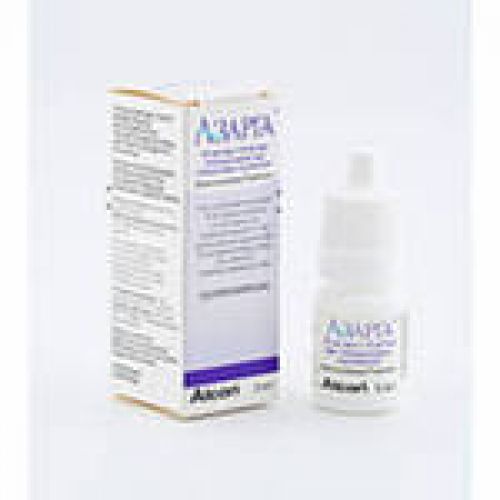
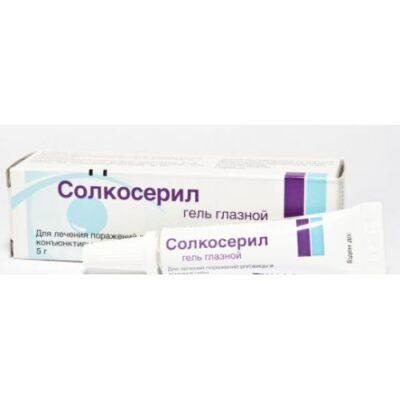
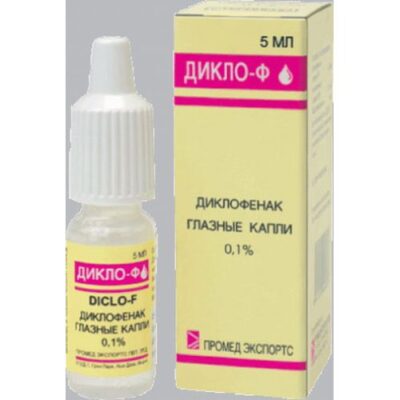
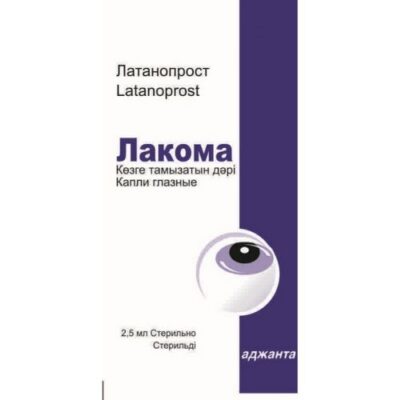

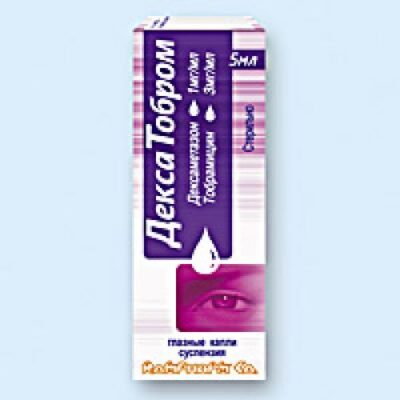
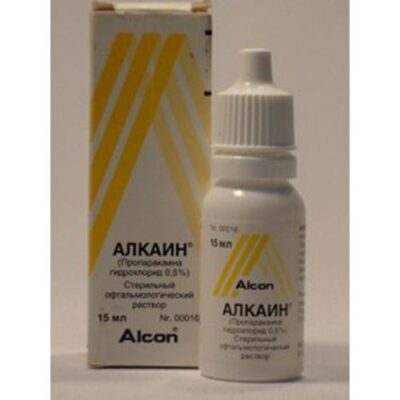
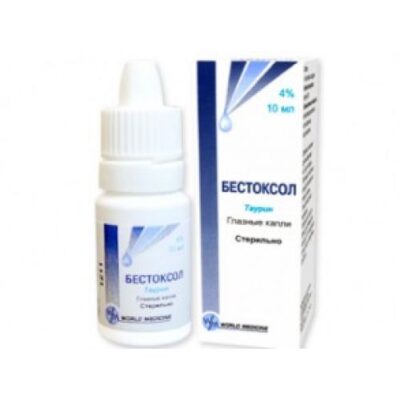
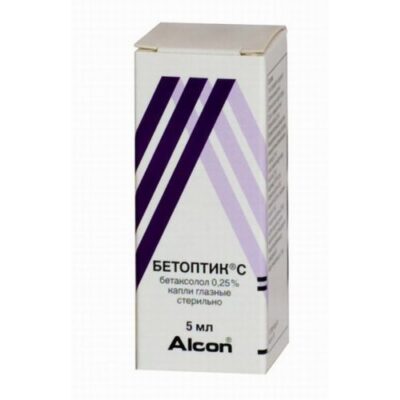
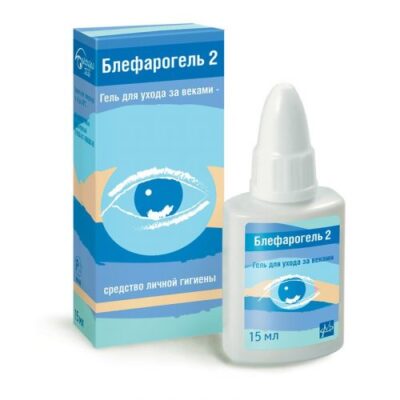
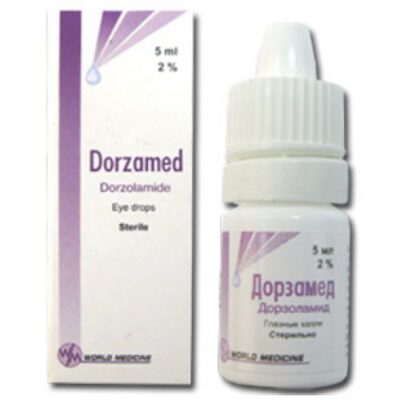






Reviews
There are no reviews yet.